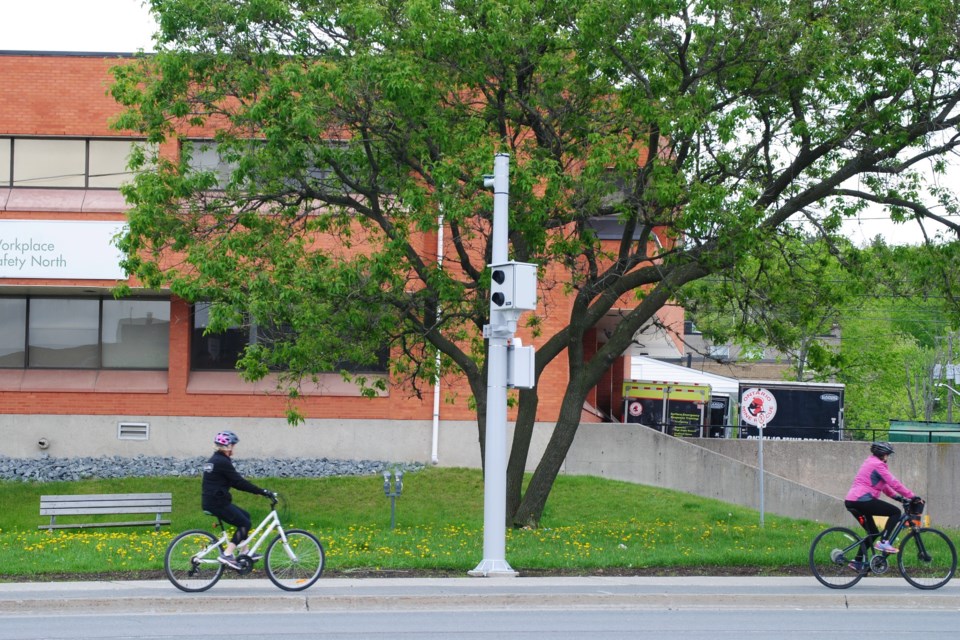Greater Sudbury’s long talked-about red light cameras will begin catching evidence of motorists plowing through red lights as early as July.
“In the last couple weeks the poles have been installed … so it’s drawing a little more interest, but at this time there’s nothing actually in the poles,” city traffic and asset management supervisor Joe Rocca told Sudbury.com.
The poles aren’t electrified yet and the boxes are currently empty. The red light camera vendor is expected to install these components and fine tune the devices within the coming weeks, putting them in operation as early as July.
The city ended up narrowing in on six locations for these red light cameras, which include:
- Paris Street at Cedar Street
- Regent Street at Loach’s Road/Algonquin Road
- Municipal Road 80 at Dominion Drive
- Lasalle Boulevard at Montrose Avenue
- Paris Street at Centennial Drive
- Lasalle Boulevard at Roy Avenue
These were locations prioritized based on a consultant’s report and deemed feasible.
“Some of the locations were identified, we just can’t physically install the cameras where they’re required to operate,” Rocca said, noting that the Barrydowne Road and Hawthorne Drive intersection is one such location.
Where red light cameras have been installed in other jurisdictions, he said serious right-angle collisions decreased by approximately 25 per cent. The number of minor, rear-end collisions tended to increase.
“Generally, people knowing there is a red light camera system installed, they will brake a little harder,” Rocca said. “That may be unexpected to the driver behind them and they may end up rear-ended because of that.”
The red light cameras will only result in tickets issued for drivers who blow through red lights and will not issue tickets for speeders.
Since there’s no way to determine who is driving, demerit points will not be issued. Fines will be $325, of which $265 goes to the city and $60 goes to the province for a victim surcharge fine.
The cost to implement the red light camera program is estimated at $500,000 per year, which means that if each camera caught one infraction per day the city would hit the financial black.
The red light cameras were originally slated to be installed last autumn, but Rocca said there were COVID-related delays in getting the equipment shipped.
Red light cameras have been a topic of discussion in council chambers since at least 2018. A followup report in 2019 cited 94 four-legged and 20 three-legged signalized intersections within city boundaries in 2017, at which there were 464 right-angle and 1,622 rear-end collisions during a five-year study period.
The city’s most problematic intersection for right-angle collisions between 2012 and 2016 was Paris Street at Cedar Street, where there were 21 collisions.
Tyler Clarke covers city hall and political affairs for Sudbury.com.
